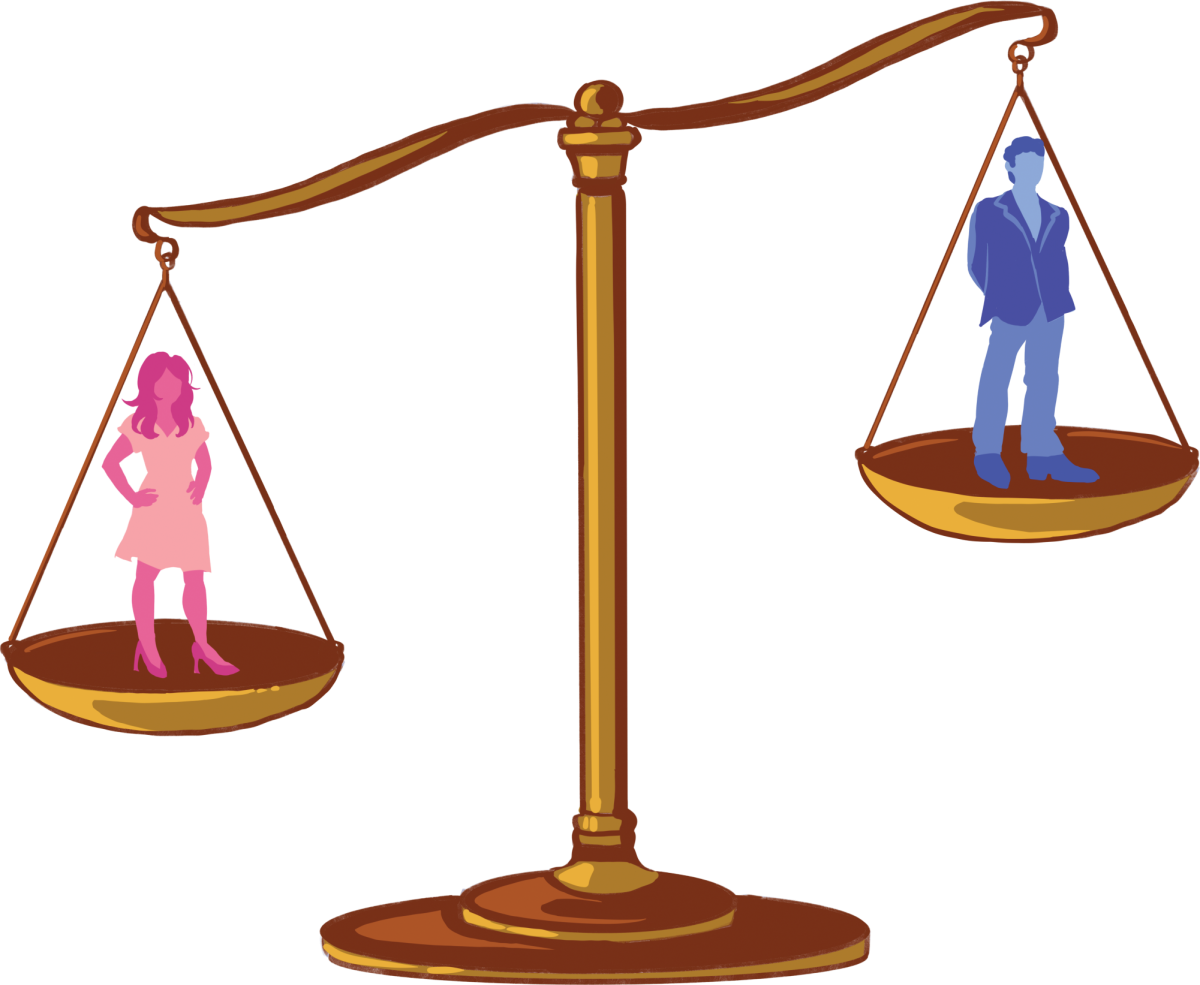Have you ever noticed how in video games the male characters have full armor on while the female characters have…less? What about the roles of Adam Sandler’s wives in his movies and how they are always significantly younger models? When was the last time you saw a man on the red carpet asked about his diet? In all of the media we consume, women are treated significantly different than their male counterparts to a degree that has become so normalized many don’t even notice.
In 2011, actress Jennifer Lawrence was cast as the main character in the Hunger Games movies, Katniss Everdeen, and received significant criticism for her body. “A few years ago, Ms. Lawrence might have looked hungry enough to play Katniss, but now, at 21, her seductive, womanly figure makes a bad fit for a dystopian fantasy about a people starved into submission,” remarked Manohla Dargis, a writer for the New York Times. This same writer did not comment on the fact that Lawrence’s costars, Liam Hemsworth and Josh Hutcherson, did not look malnourished, or “hungry enough”. Jeffrey Wells, the writer of Hollywood Elsewhere magazine, also commented on Lawrence’s appearance, stating that she was a “fairly tall, big-boned lady” who was “too big” for Josh Hutcherson. The media never once picked this same grievance with the male actors. The Hunger Games fandom.com website states that Peeta (Hutcherson’s character) was supposed to be 5’10, three inches taller than Lawrence’s character. There is a reason Wells didn’t point out anything about Hutcherson’s height or criticize him for his build — because criticizing women’s bodies is so normalized in media and society, this writer could feel comfortable saying such things about Lawrence but not Hutcherson. Women’s value is largely associated with their looks rather than their skills, so despite the fact that Lawrence might have been the perfect fit for the role, she simply didn’t have the “look” according to critics.
The media has had such a fixation on women’s bodies for so long that it goes unmentioned, but its influence leaks into societal expectations of women. This is seen in the obsession with women’s bodies to look a certain way to fit a role or to sexualize women to make a profit off of a male audience. The hypersexualization of women in men’s media, especially in video games, has gone rampant. Mortal Kombat, a popular video game, has 20 female characters in the entire series, and according to CBR.com, only one playable female character out of the 77 playable fighters. Looking at this character roster, it is clear who the audience of these characters is targeted to: young boys. Mortal Kombat, alongside another popular video game Street Fighter, has its female characters in fairly exposed outfits that are unsuitable for combat. While many male characters have their chests exposed, the male chest is not nearly as sexualized as the female chest. I’m sure some of the many women who play these games appreciate the outfits of their favorite characters, but that does not negate the fact that there is a clear reason why these characters are dressed the way they are. These games are making money off of sexualizing women to their young male audience because it has become the norm for women to be used as commodities for sales.
Unfortunately, this discrimination in women’s media can also be seen in the gendered language commonly used by the press to portray public figures. For example, in 2016, retired NFL quarterback Tom Brady was characterized by CBS Sports as a talented surfer and a good father for showing the basics of surfing to his son while vacationing on the beaches of Costa Rica. Three years later, in 2019, Gisele Bündchen, a Brazilian fashion model and Brady’s former wife, was spotted on the same beaches of Costa Rica. However, instead of highlighting Bündchen’s vacation, Fox News claimed Bündchen was “flaunt[ing]” her “bikini bod”. Despite being in similar situations, the media chose to depict Brady’s athletic ability during his vacation and reduced Bündchen to her outfit, describing her “white bikini top” and “high-waisted green shorts” instead of her own surfing skills, which she had also been practicing on the beach, like Brady. It’s ridiculous for the media to portray women in such a manner as if a woman’s only reason for going outside or on vacation is because of her wardrobe. This difference in language is hardly subtle, and it is disappointing to witness in the 21st century.
Women and men have very different expectations when consuming media, and neither set of expectations is always achievable. While pointing out the double standards placed on women, it is important to note men have their own set of unfair standards that have the possibility of damaging the consumer of said media. I am only saying this to acknowledge that there are double standards that affect the population as a whole, but I am specifically talking about how women are treated.
The people who produce the media we consume understand that they can make a profit off of sexualizing women. The hyper-fixation on women’s bodies has been leaking into our everyday society to the degree that women not in the media might feel the same expectations pressured onto them that the media has placed on models and actresses. A survey conducted by AARP in 2023 found that most adult women largely believe beauty ideals are based on media. The media has always been incredibly harsh on women, whether it be Jennifer Lawrence or female characters from Mortal Kombat, and there is no let-up.






